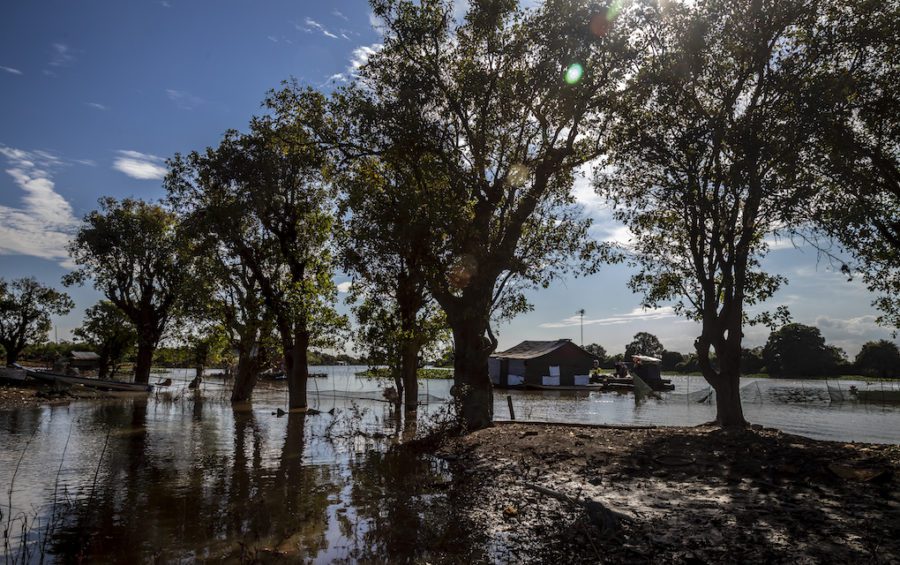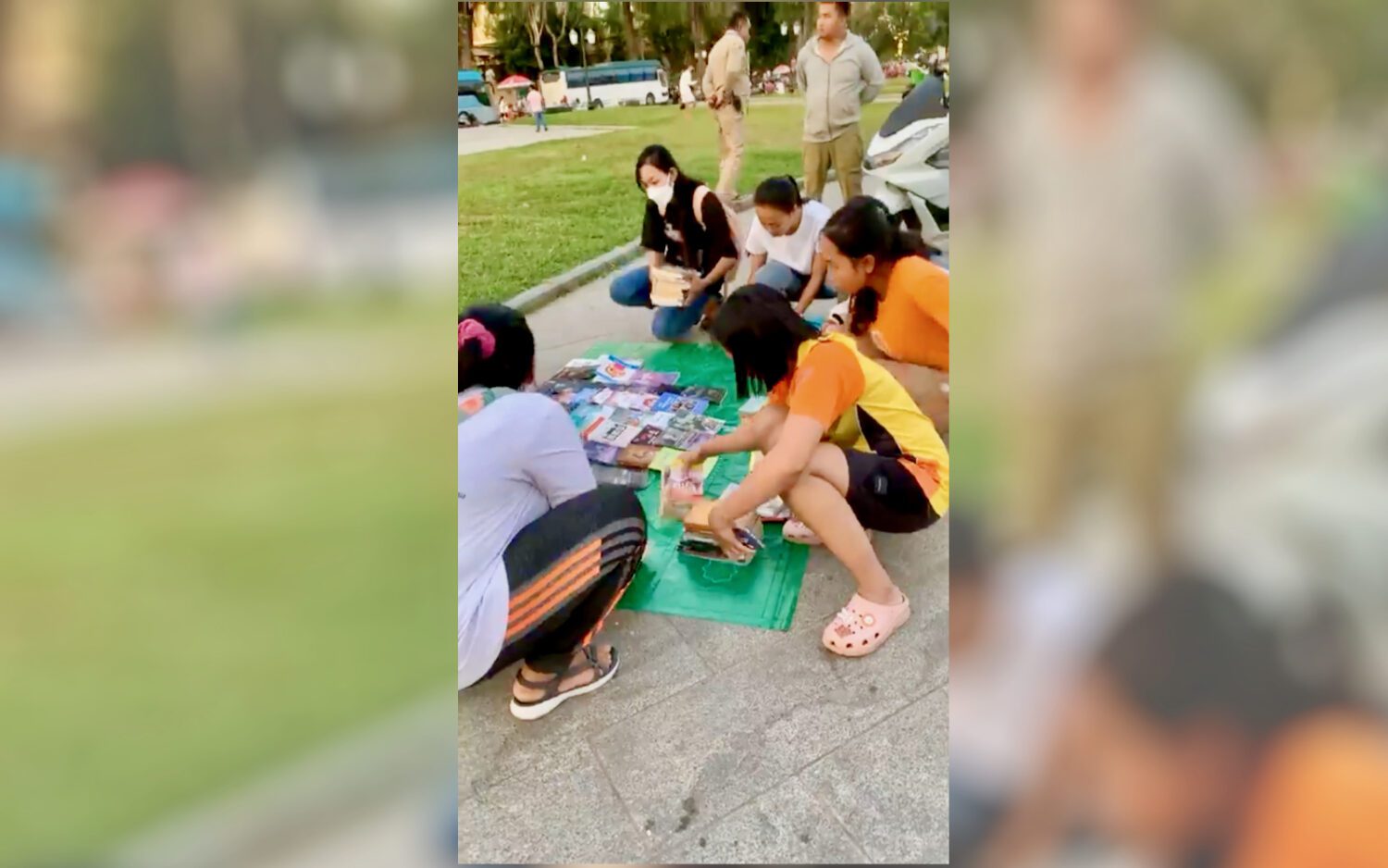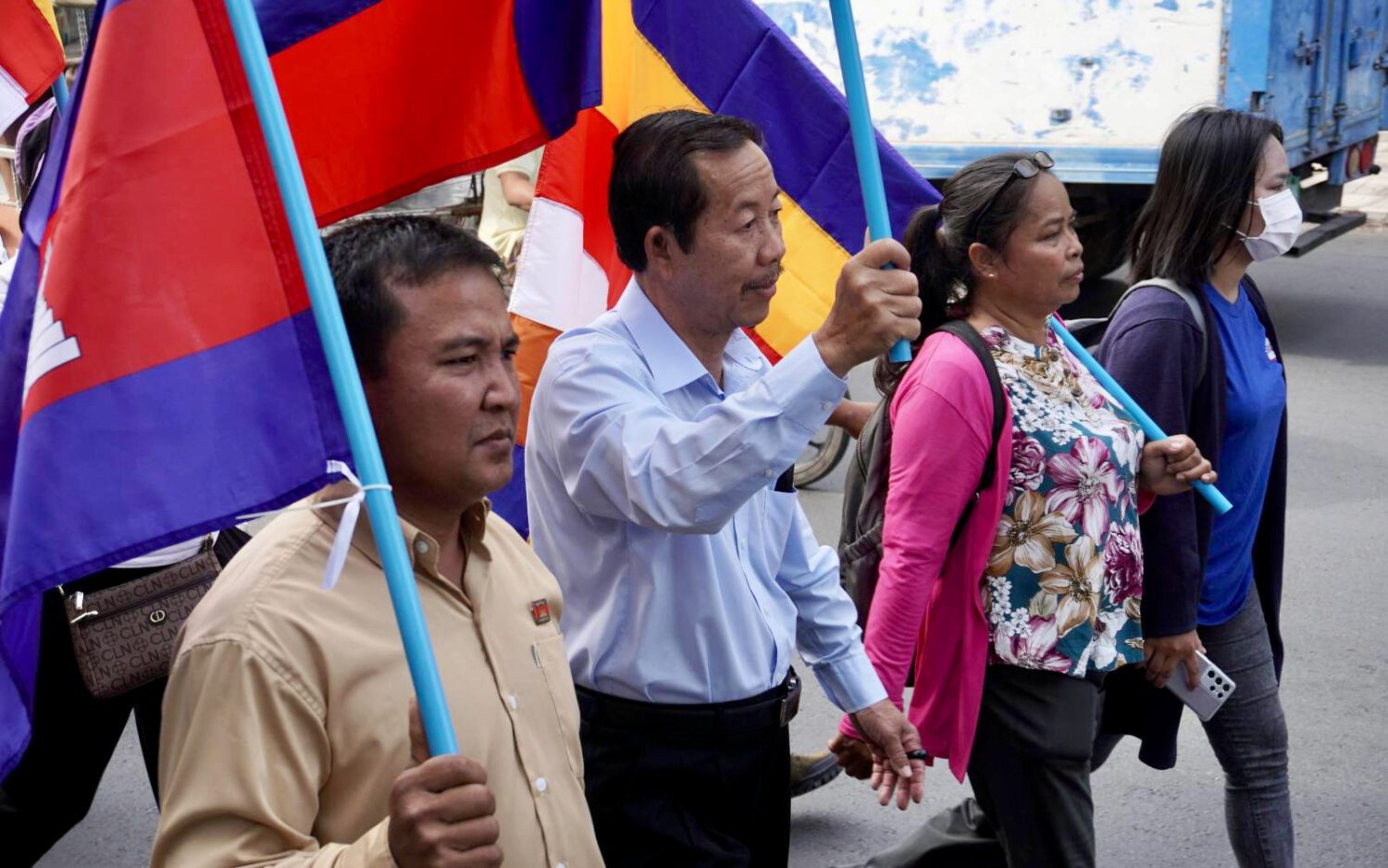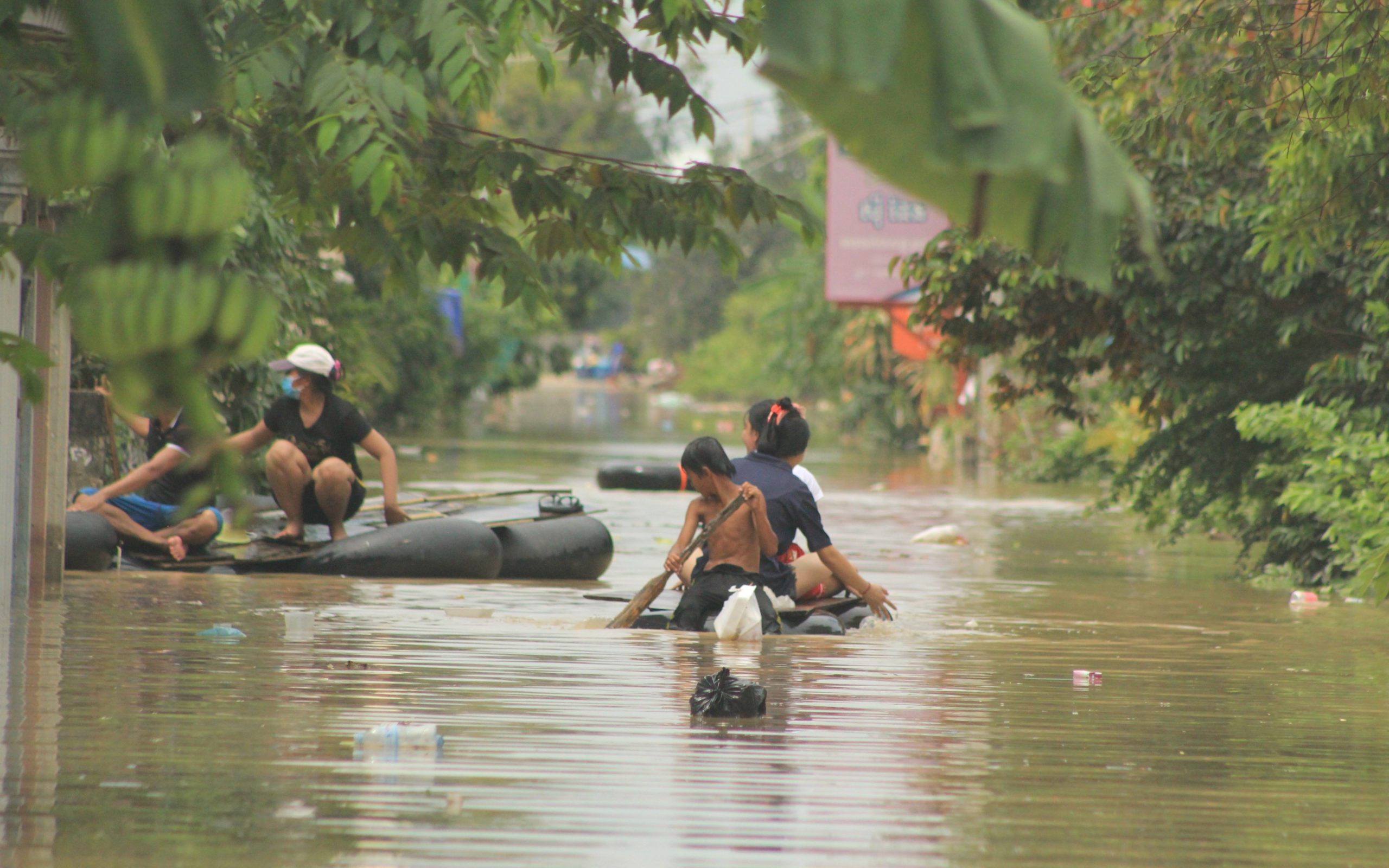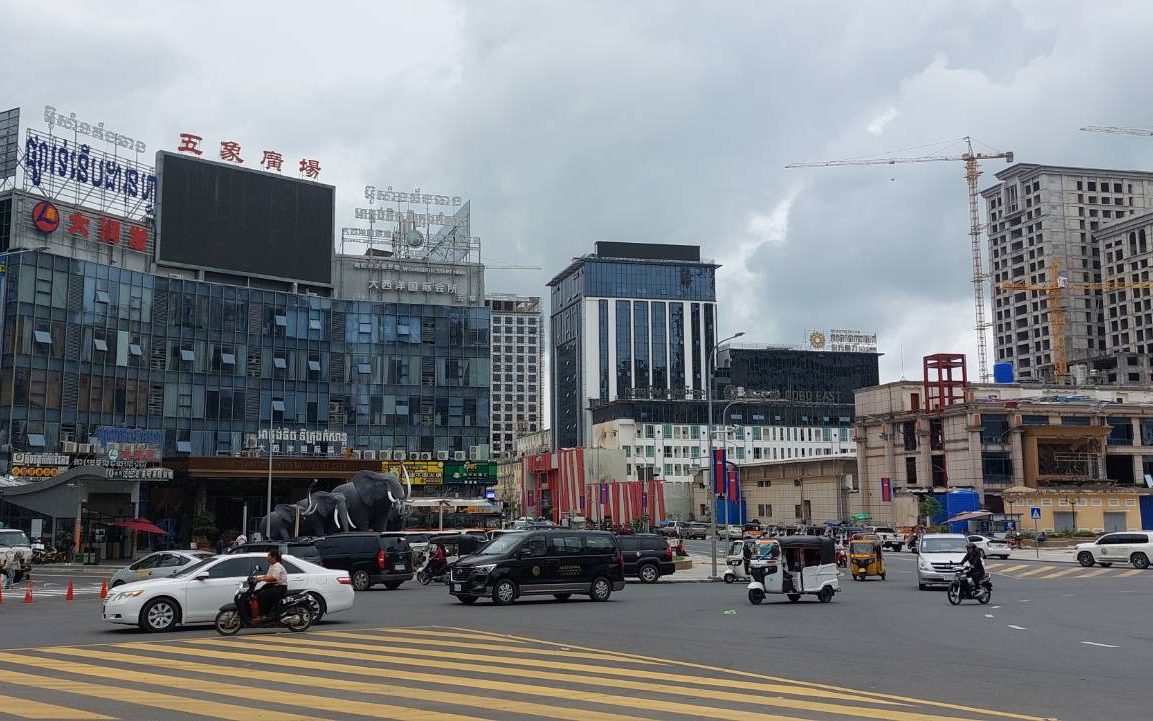TREAY VILLAGE, SIEM REAP — Mai Mao worked as a fisherman in northwest Cambodia’s Treay village for more than 60 years before he decided to retire his net in 2018. At 77 years old, he feared that he might be too frail for the work and fall into the water from his boat.
But younger men in Treay have also followed him out of the fisherman’s life on the Tonle Sap lake, instead farming red chilies or migrating abroad for work, in order to replace an income they’ve lost from an industry they fear is drying up.
In Treay, and other communities bordering the Tonle Sap — the largest body of fresh water in Southeast Asia — flooded forests have traditionally allowed fishers to fill their nets and sustain their families each season. Now, government officials also see the soaked woodlands as a possibly lucrative stock on international carbon markets.
As the Tonle Sap ecosystem is strained by hydropower dams, drought and unprecedented forest fires, the flooded forests, people who rely on them, and the forests’ carbon-capturing potential face increasing threats.
The flooded forest is not a forest which naturally burns, and when it burns, it dies.
Simon Mahood, WCS Cambodia technical adviser
During the dry season from November to May, when Treay residents live on solid ground, the trees’ full trunks are still visible among the village’s stilted houses, stacked fishing traps and motorbikes.
But in the rainy season, water floods from the Mekong River into the Tonle Sap, making it swell to about 13,000 square kilometers — approximately five times the size of the dry season lake. The estimated 900,000 residents of the Tonle Sap floodplain find themselves living above water, and commuting between raised and anchored houses by motorboats for about half the year.
In Treay, the native kum pneang, rieng and ptoul trees scattered between houses become habitats for fish to lay their eggs, with trohs vines spidering between roots and trunks to form nests, a group of locals tell reporters as they pick at the last of their fried fish from lunch.
From his office in Phnom Penh, national Department of Fisheries Conservation director Ouk Vibol says the country has long known the importance of flooded forests, which serve as crucial breeding grounds for freshwater fish, the primary source of animal protein and nutrition for Cambodians.
“We manage fishery resources and habitat together,” Vibol says. “They’re linked to each other. We can’t have one without the other.”
“When It Burns, It Dies”
As Cambodia’s economy has rapidly grown, so too has its rate of deforestation. Based on satellite imagery, conservation group Global Forest Watch estimates that Cambodia lost 2.17 million hectares of forest between 2001 and 2018 — equal to a quarter decline of tree cover since 2000 — and released an estimated 914 megatons of carbon emissions. The Tonle Sap protected area recorded about 16,800 hectares of forest loss between 2001 and 2018, according to an estimate using the organization’s digital mapping tools.
These flooded forests evaded the clear-cutting — a logging practice in which an area’s trees are uniformly cut down — that’s associated with the country’s dry forests in the east and coastal jungles, until record droughts hit the nation in 2016 and triggered overwhelming forest fires.
Conservation organization WCS Cambodia monitored flooded forests in Prek Toal, a protected area along the Tonle Sap in Battambang province, for more than 20 years. Still, WCS technical adviser Simon Mahood says they cannot predict the intensity of the flooded forest fires that will likely hit the area in the coming years.
Mahood says the fires are mostly human-made, with causes ranging from failing to properly extinguish cooking fires to intentional burns, but the record droughts in 2016 parched the peat and allowed the fires to spread quickly.
“In the past when everything was much damper, you never really needed to do a great job of really soaking the ashes,” Mahood says. “Things have changed, and if [farmers] don’t really soak the ashes, then they can very easily accidentally start a big fire.”
They say there’s always fish in the Tonle Sap, but there’s nothing here.
Mai Chamrong, fisherman
While fires inside flooded forests may seem counter-intuitive, the climate change-induced conditions along the Tonle Sap create a “perfect storm” scenario. When WCS assisted the Prek Toal sanctuary guards and the community in fighting 2016’s fires, they lacked equipment to airdrop water and douse the flames, and had to haul water long distances from the lake, Mahood recalls.
“The flooded forest is not a forest which naturally burns, and when it burns, it dies,” he says.
Mai Chamrong, a fisherman in Treay and nephew of Mai Mao, says the village lost hectares of forest in subsequent dry seasons, through April and May 2019. He says that the people who live in Treay protect their own trees, but their village also attracts opportunists who live closer to the national road 30 km away to launch boats and fish — and increasingly, farm and trade. He and a few other locals claim that “outsiders” drop their smouldering cigarette butts, or purposefully start fires to clear land or scare out wild animals that they can then catch.
“To me, I don’t think the fires would happen if a human didn’t do something,” Chamrong says.
Making a living from fish was once lucrative for Chamrong and his family, but the drought and flooded forest fires are making it harder each year.
“There’s less water, there’s fewer fish” is a common refrain among the residents. As reporters walk by on land that is underwater during the wet season, a woman watching from her porch says she didn’t bother to take her boat out that day because there wouldn’t be any fish.
While climate change has shifted rainfall patterns toward drought in the last three years, the Mekong River and its entire ecosystem has been ravaged by upstream hydropower dams in Laos and China. Last year, the Mekong River Commission, a regional monitoring and governance organization, reported record-low water levels at the height of the flood season in July, and then warned of severe or extreme droughts in December. The low levels of water have turned the Mekong River aquamarine — beautiful to behold but potentially changing patterns in nutrient-rich sediment and levels of dissolved oxygen, which are both critical to fish living in the Mekong-Tonle Sap system, and could throw off their life cycles.
Mao, the fisherman-turned-chilli-farmer, says he picked the right time to retire from fishing two years ago. “The last two years have been really bad; the drought was very dry,” he says.
Mao and other residents also decided to till the land to grow chillis because consumers demanded the crop and he could earn between 10,000 and 20,000 riel ($2.50–$5) per kilogram. Even if they take three or four months to grow, it’s become more lucrative than fishing and the land was already cleared by the fire, Mao says.
Based on his observations, Chamrong believes that “a hundred types of fish have gone extinct,” and rattled off a dozen types, in all ranges of size and color.
The plague overcoming the fishing industry is apparent to villagers in Treay. Several residents tell reporters their siblings and cousins left the village to work in Thailand or Vietnam.
Under his house that floats on the permanent lake, Chamrong keeps a net with hundreds of catfish inside, so he can guarantee fresh fish for his family. Chamrong is frustrated that there was little urgency from the national government when the trees burned and the drought stretched on.
“[Officials] say there’s always fish in the Tonle Sap, but there’s nothing here,” he says.
Dreams of Carbon Credit Cash
In 2019, the Ministry of Agriculture, Forestry and Fisheries felt new urgency to protect the flooded forests in an effort to capitalize on the international carbon market scheme. Carbon markets create a system where corporations and countries that emit high levels of greenhouse gases can “offset,” or artificially lower, the emissions that they are unwilling to reduce by funding conservation or adaptation efforts that reduce global emissions.
In 2017, the Cambodian government was given the chance, and $5.5 million in funding, to pilot and create its own nationally-run REDD+ system. REDD+ programs, shorthand for “reducing carbon emissions from deforestation and forest degradation,” are conservation programs on the carbon market that funnel carbon purchase profits to forestry protection efforts and often support sustainability in nearby communities.
Cambodia received the money from global climate funds — with the bulk coming from the World Bank’s mostly-Western-government-funded Forest Carbon Partnership Facility — to protect and prepare three types of forest that could absorb high levels of carbon, including 40 hectares of flooded forest on the Tonle Sap.
If the country can prove to international assessment bodies that the carbon absorption potential, or “carbon stock,” is accurate and well-managed, then these projects can be placed on the carbon market.
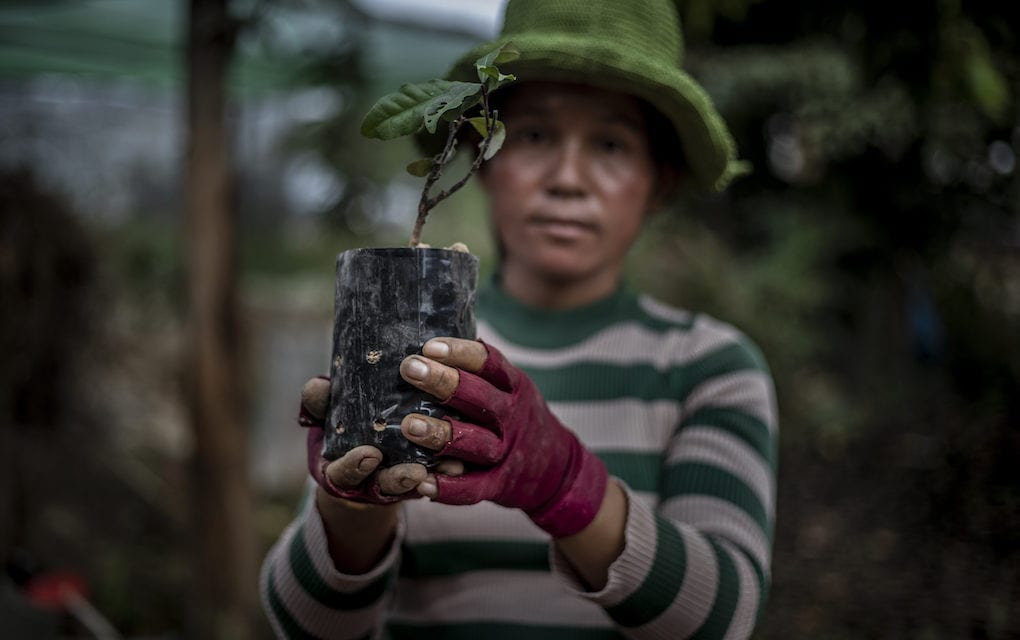
In January, Environment Minister Say Sam Al highlighted the government’s desire to conserve natural resources so the country could earn carbon credits and cash in, according to the Phnom Penh Post.
Sam Al said the efforts of WCS, WWF Cambodia and local communities to protect natural resources allowed the government to sell carbon credits while also supporting local economic development.
“With the efforts in managing and conserving natural protected areas, Cambodia has sold carbon credits from the Keo Seima Wildlife Sanctuary, Southern Cardamom Wildlife Sanctuary and Tatai Wildlife Sanctuary at the voluntary carbon market,” the minister said during a speech at the Keo Seima sanctuary in Cambodia’s northeastern province of Mondulkiri.
“Cambodia received a total of $11 million to support environmental protection initiatives and raise the living standards of the local communities,” he added.
Most of Cambodia’s REDD+ projects to date have been run by NGOs, which solicit potential donors. For instance, in a record carbon sale in 2016, the Walt Disney Corporation bought $2.6 million of carbon stock from the Keo Seima sanctuary, which was managed by WCS.
But the project on the Tonle Sap would be the first that will be brokered by the government.
“If we keep the area well, we will get benefits when donors come to see and know the flooded forests are protected,” says Vibol, the fisheries conservation director.
Forest Pushed Back by Fires
A 2018 report from the U.S. development agency USAID and the U.S. Forest Service (USFS) suggests that flooded forests could hold more potential for carbon absorption than dry forests, but community maintenance is critical. Sites sampled in Siem Reap province’s Kampong Phluk village, where some residents had recognized the importance of trees and protected them, showed higher carbon stocks than partial forests or shrublands.
Cambodia’s total greenhouse gas emissions were nearly 52 million metric tons in 2013 — 0.11 percent of global emissions — but the country hasn’t updated its emissions report since that time. With the rate that the nation is importing cars, opening factories and flying in new tourists and businesspeople, Cambodia’s carbon contribution is likely rising.
My duty is only to grow them…. It’s the community’s duty to take care of them.
Kim Savoeurn, fisheries official
Richard MacKenzie, a USFS researcher who led the survey of Tonle Sap flooded forests’ carbon storage capacity, says he’s excited about the idea of a carbon capture project in flooded forests, but many sections of the forest are too thin to hold carbon. As he observed trees in 2016, with mollusks and sponges dried onto their bark, a fire scientist pointed out areas where saplings were unable to take root due to ruthless wildfires.
“You can see the fires are pushing the areas [of dense forest] back,” MacKenzie says. “It has a huge impact in terms of carbon storage, and of course the smoke contributes to carbon emissions.”
MacKenzie emphasizes a need to restore the forests and employ guards in order for future REDD+ projects in the region to thrive.
Another challenge is more technical. Sarah Milne, a senior lecturer at Australian National University, says that based on her research within the country and abroad, REDD+ is a problematic choice for Cambodia because carbon measuring and verification require international expertise that would be costly to employ in developing countries.
“The downside of the carbon market is it demands technical expertise, computing power and [a results] modelling effort that is beyond what most Cambodian officials and NGOs can do,” she says.
No Power to Protect
On the northwest edge of the Tonle Sap in Siem Reap province, Kim Savoeurn is watching a crew of four women as they shake soil into perforated plastic bags and set a neang sapling in the middle of each bag. Savoeurn, a local fisheries official, complains that it’s hard to keep these 40,000 saplings alive in the dry season, and some of the two-week-old sprouts already look parched by December, about a month into the dry season.
The trees, shaded by green and black tarps that usually cover buildings under construction, will soon be sent to a conservation zone in need of restoration, which fires razed in 2016.
As soon as the neang trees are in the ground, Savoeurn says his job is done. “My duty is only to grow them,” he tells reporters, laughing. “It’s the community’s duty to take care of them.”
In theory, REDD+ schemes aim to keep forest land in the hands of people who live there and rely on its existence. However, Cambodia’s REDD+ projects have been stymied, if not completely closed and divested from, for reasons that trace back to a lack of forest patrollers and resources on the ground.
Though Milne has not researched the pilot projects in Cambodia’s REDD+ plan, she says that international funding in Cambodia has followed a clear pattern, where the state “holds the cards” over the conservation projects and associated funding, while people living in forests bear the brunt of climate change, deforestation and hydropower development, with little power to change their lifestyle.
“If they just focus on local communities to restore forests, I think that’s a far more wholesome goal,” she says.
Chamrong, the fisherman in Treay, says he and the rest of the village are motivated to protect their forests, doing whatever it takes to increase the meagre amount of fish they can catch. But even if they do catch someone clearing the forest, Chamrong says he’s powerless to intervene.
“We can’t do anything because we’re normal villagers,” he says. “They broke the law and could be sent to jail, but we can only give them a warning.”
Additional reporting by Roun Ry
This article was produced by New Naratif and VOD, who have partnered to publish long-form journalism from Cambodia that empowers our shared community with news and information.


